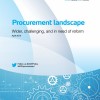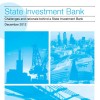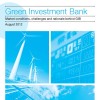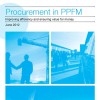The Retention Gap, reveals in detail the cost to the engineering sector of losing senior staff and the impact to business effectiveness. This report shows that the UK engineering sector stands to lose up to £9.5 billion over the next ten years due to its failure to retain staff.
ACE has campaigned continually for stable and reliable investment decisions in the area of staff retention recognising that they can help businesses to reduce costs by committing to a continual professional development plan. This report shows the true costs that businesses face through staff turnover and why it is imperative that companies invest in the development of their existing staff.
It is important that businesses are able to simultaneously retain and acquire the talent they need for their future prosperity while protecting their productivity in the present.
To inform and calculate the retention gap this latest piece of research uses extensive data from almost a decade of ACE’s benchmarking service which measures over 500 metrics of a company’s performance.
The research reveals the cost to a company of losing a Salaried Partner/Other Director or Department Head is £13,491 whereas, an engineer cost is £5,128.
Whilst these figures do not seem significant when looking at an individual member of staff, if you then factor in that the industry has an annual average staff turnover of approximately 20% of its total workforce, these costs soon become significant.
With 1.86 million posts due to be filled in the next ten years these costs amount to a staggering £5.2 billion to £9.5 billion depending on the roles being filled and how they are filled throughout the decade.
Industry, however, does not only need to focus on the costs associated with losses at the highest level of their organisation. With an impending skills shortage, companies need to focus more on how they retain and develop staff as they enter and progress within the company.
Looking more specifically at the future skills being developed to satisfy the new requirements from within the industry, the cost associated with losing a senior technician is £4,908. For junior and graduate engineers, however, the equivalent figure is £2,912 and for entry-level technicians it is £2,820.
Apprenticeships and fair and open access to opportunities are high on the Government’s agenda and this report successfully addresses both issues. ACE’s Technician Apprenticeship Consortium has successfully shown what can be achieved through effective collaboration between companies, the professional institutions and the training sector.
Company websites:
http://www.acenet.co.uk/
http://www.engtechnow.com/










